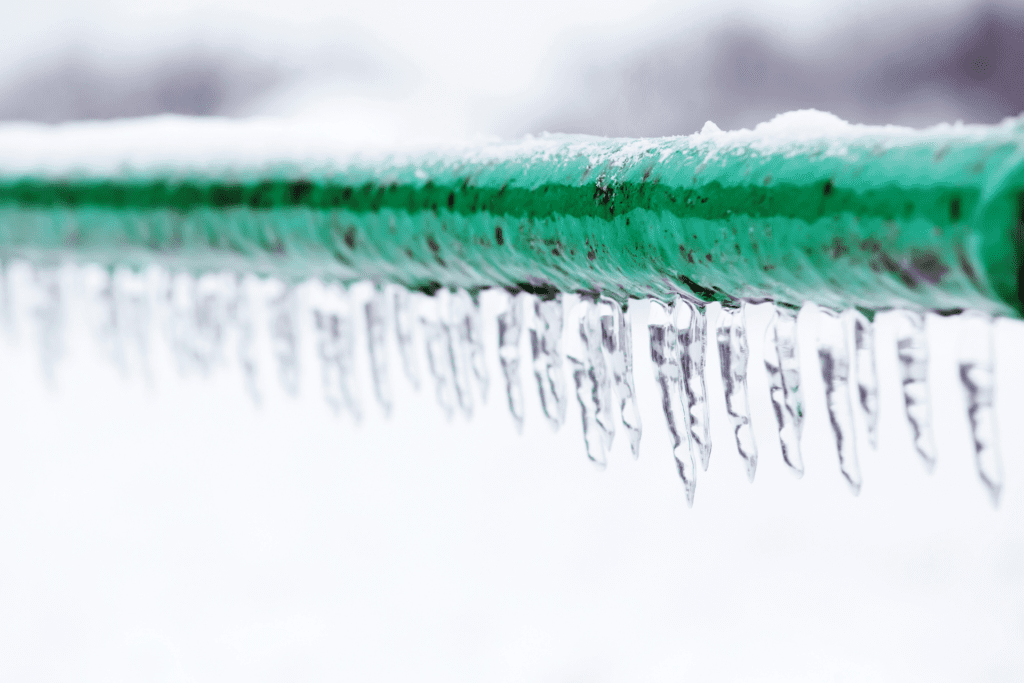How to Defrost Your Frozen Pipes as Soon as Possible
One of the most common plumbing concerns in the winter is the worry of frozen pipes. When a frozen pipe is detected, it must be thawed quickly and safely to ensure you don’t create further damage to your plumbing or home.
The urgency of thawing a frozen pipe is to prevent it from bursting. The pressure created by frozen water is enough to burst the strongest pipes, which is why frozen pipes are homeowners’ worst plumbing nightmare. So, to start defrosting your frozen pipes as soon as possible, follow these tips:

1. Locate the Frozen Pipes
The easiest and fastest way to locate a frozen pipe is to turn on all the faucets in the home. If one or multiple faucets aren’t running water, trace their plumbing lines using your hands until you can feel the ice built up around it.
If there’s no water coming from any faucet, there’s likely an issue with the main water supply pipe. A bit harder to find, this pipe is usually located in the basement or crawl space, on the side of the house facing closer to the street.
2. Shut Off the Water Supply
You should always turn off the water if your pipes are frozen. If the pipe is frozen due to exposure to cold temperatures, shutting off the water supply helps prevent additional water from entering the pipe and freezing. This is crucial, especially in extremely cold conditions, to avoid the recurrence of freezing issues.
Additionally, you want the water shut off in case of a burst during the thawing process. Water expands as it freezes, and this expansion can exert pressure on the walls of the pipe. If the pipe is frozen and you apply heat to it for thawing, the melted ice can create even more pressure within the pipe. Since it’s likely weakened due to freezing, it may be more prone to bursting when the water starts flowing again. Shutting off the water supply alleviates this pressure, reducing the risk of burst pipes.
3. Thaw Exposed Pipes
If your blocked pipe is exposed, you have a variety of options for unthawing. You can wrap the area with hot wet towels, use a space heater or portable heater facing the pipe, or carefully use a blow dryer to melt the blockage.
No matter how you choose to thaw, you’ll want to do so with caution to prevent a burst or fire. It’s ideal to begin the thawing process near the edge of the frozen area, the side nearest to a kitchen or bathroom. This allows for any water or steam produced by the heating method to escape the pipe quickly. Make sure to leave the faucets on to allow the water to escape.
4. Thaw Enclosed Pipes
If the pipe is a bit harder to access, your thawing options become limited. Some pipes can be located behind a wall, making it almost impossible to get to them directly without the help of a professional. You can first try to turn the temperature up on your thermostat.
If you know the exact location of the problem pipe, you can try using infrared light to thaw frozen pipes in a wall, and if that fails, cutting out a section of the drywall is an option but best left to the professionals to avoid further damage to your home.
Tips to Prevent Frozen Pipes
To avoid dealing with the hassle of defrosting your frozen pipes, here are some tips to help you prevent pipes from freezing in the first place:
- Insulate Exposed Pipes: Insulate pipes in areas that the heat doesn’t reach, like crawl spaces or attics. Pipe insulation sleeves can be used for an extra layer of protection.
- Keep Interior Doors Open: Allow warm air to circulate throughout your home by keeping interior doors open. This includes cabinet doors (like under the sink) where some pipes are located.
- Let Faucets Drip: In freezing temperatures, it’s smart to let your faucets drip. The movement of water can help prevent freezing by relieving pressure within the pipe.
- Maintain a Consistent Temperature: Keep your home at a consistent temperature, especially during cold weather. Avoid drastic temperature changes that can contribute to freezing and thawing cycles in the pipes, as this will ultimately lead to a burst.
When it comes to thawing frozen pipes, don’t hesitate to reach out to the professionals at Scott Hale Plumbing! We are a reliable choice for all your plumbing needs in Salt Lake City. Request service or call us today at 801-981-4543.

